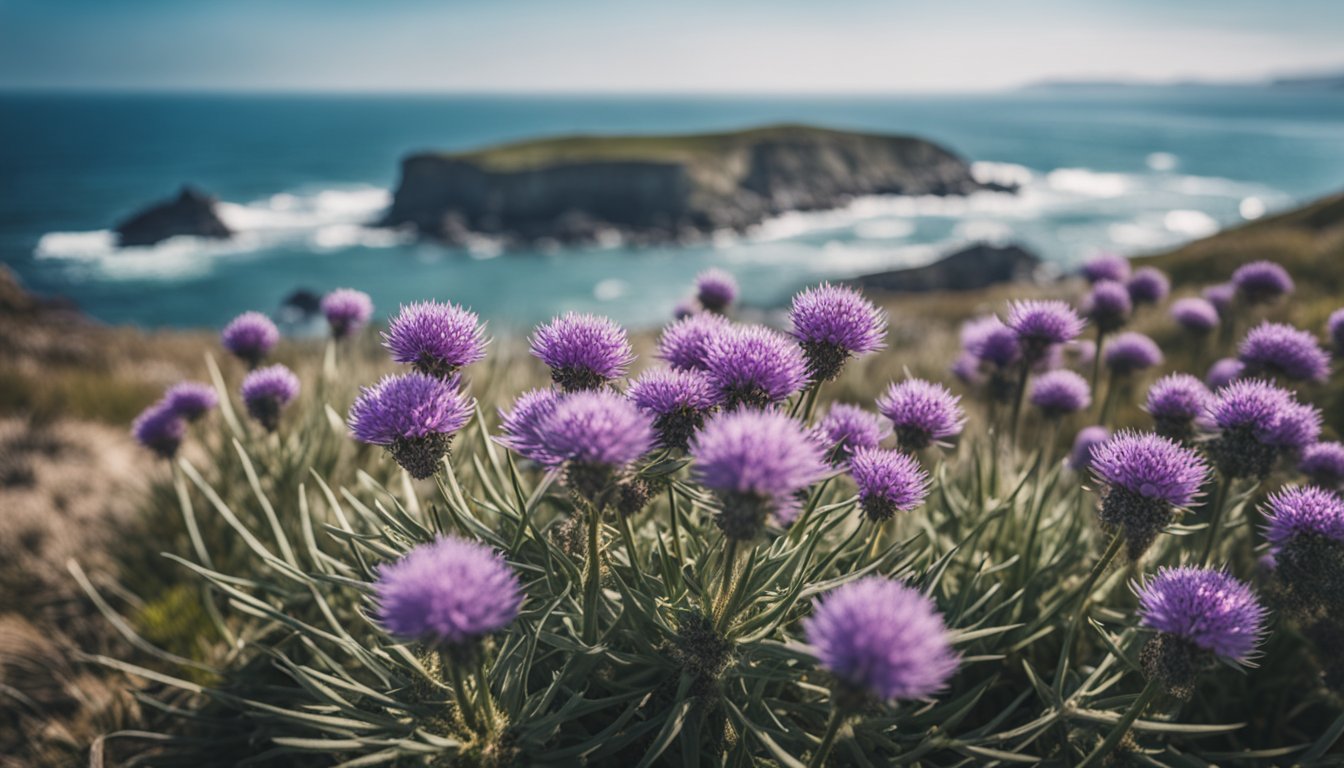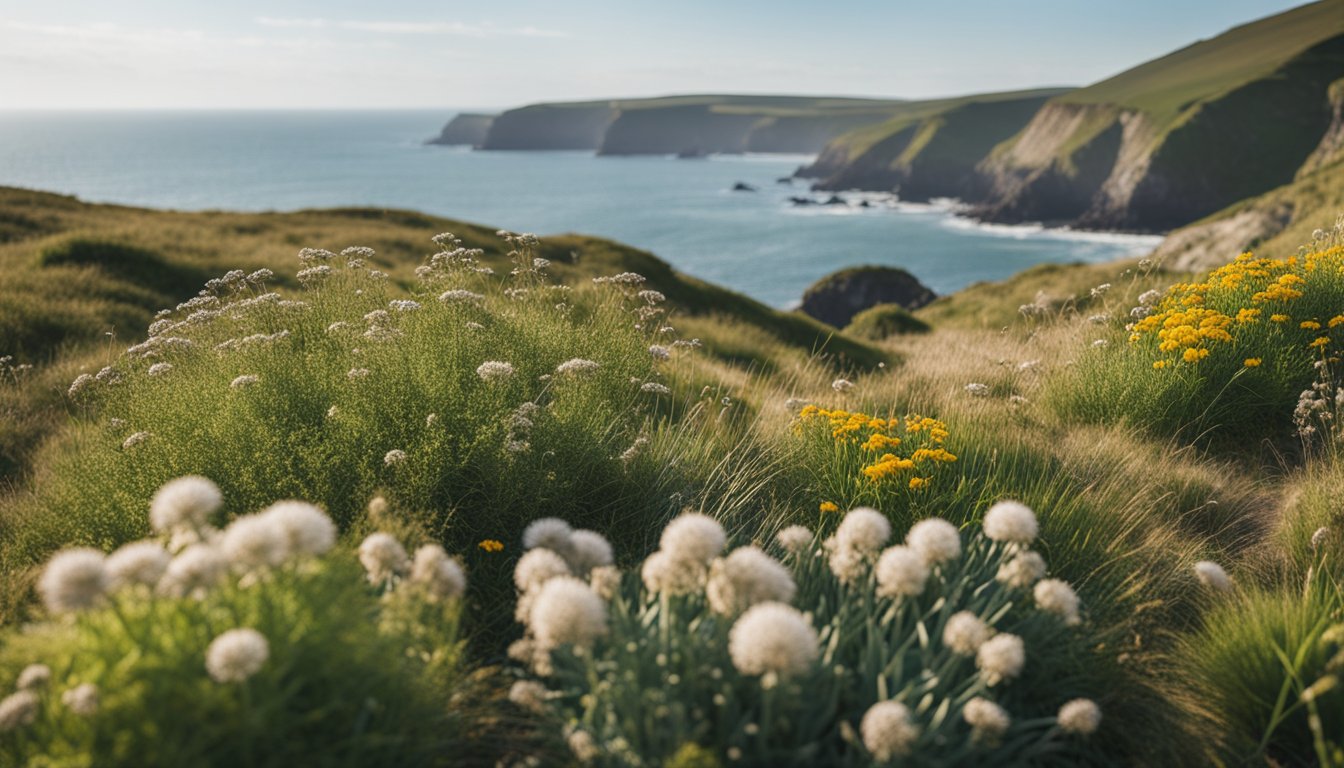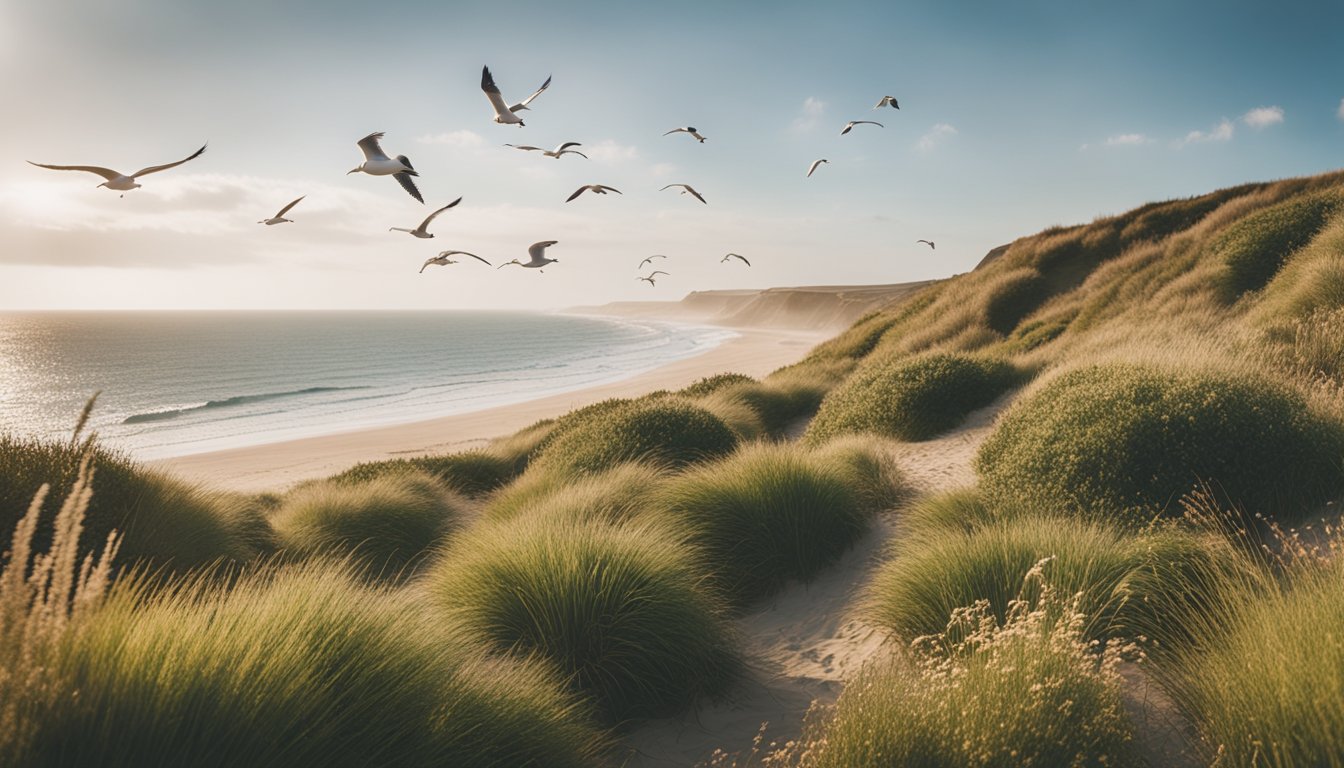Late updated: 19 Jul 2024 09:07
Written by: Emily Thornton
Native UK Plants for Coastal Gardens: Enhancing Coastal Beauty and Resilience
Gardening in coastal areas can be a unique challenge due to strong, salt-laden winds and sandy soils. Yet, with careful selection of native plants, we can create stunning, resilient coastal gardens. Utilising native UK plants not only ensures that our gardens thrive but also supports local biodiversity.

Plants such as Sea Thrift (Armeria maritima) and Marram Grass (Ammophila arenaria) are perfect examples. These plants naturally stabilise sand dunes while adding visual appeal and texture to our gardens. The rugged beauty of these plants emphasises how native species can offer both practicality and aesthetic value.
Moreover, incorporating plants like Sea Kale (Crambe maritima) further enriches our coastal gardens. Found along the southern coast of England and other parts of the UK, Sea Kale's thick, waxy leaves and fragrant white flowers create a delightful sensory experience. By integrating such plants, we create diverse ecosystems that benefit not just us but also the local wildlife.
Key Takeaways
- Opt for native UK plants to enhance and sustain coastal gardens.
- Select hardy plants like Sea Thrift and Marram Grass to stabilise and beautify garden areas.
- Include a mix of native ornamental flora to support local biodiversity and create diverse ecosystems.
Selecting Hardy Plants for Coastal Conditions
In coastal gardens, selecting the right plants involves choosing species that can endure harsh sea winds, tolerate drought, and maintain greenery year-round.
Trees and Shrubs Suited for Sea Winds
Choosing trees and shrubs that withstand sea winds is crucial. Hawthorn (Crataegus monogyna) is a native option, providing a hardy windbreak with its dense foliage. Holm Oak (Quercus ilex) is another excellent choice, an evergreen tree that thrives in exposed conditions and provides year-round protection against wind.
Tamarisk (Tamarix ramosissima), with its feathery foliage, offers both beauty and resilience. Suitable shrubs include Sea Buckthorn (Hippophae rhamnoides), which boasts silver leaves and orange berries, and Escallonia (Escallonia spp.), known for its glossy foliage and pretty flowers. Combined, these plants create effective and visually appealing windbreaks.
Drought-Resistant Flowers and Grasses
Drought resistance is key in coastal areas where sandy, well-drained soils prevail. Sea Holly (Eryngium x zabellii 'Blue Waves') stands out with its striking blue flowers and spiky appearance, making it a favourite for adding texture and colour.
Sea Campion (Silene uniflora), a low-growing perennial, is perfect for edging borders or filling crevices. Giant Mullein (Verbascum olympicum), with its tall yellow flower spikes, provides an eye-catching focal point. For ornamental grasses, Marram Grass (Ammophila arenaria) and Blue Fescue (Festuca glauca) are invaluable, combining well with perennials to create a dynamic landscape resilient to dry spells.
Evergreen Options for Year-Round Greenery
Maintaining greenery throughout the year is important for aesthetic appeal and garden structure. Holly (Ilex aquifolium), a classic evergreen, offers glossy leaves and red berries, making it ideal for winter interest.
New Zealand Mirror Plant (Coprosma repens) provides colourful foliage that changes with the seasons, adding variety. Griselinia (Griselinia littoralis) is another robust evergreen, perfect for hedging. Additionally, Privet (Ligustrum spp.) is versatile, suitable for both informal and formal settings.
These evergreen choices ensure that coastal gardens remain lush and vibrant year-round. Their low maintenance and resilience make them essential components of any well-designed coastal landscape.
Creating a Diverse Ecosystem with Ornamental and Native Flora

Combining ornamental and native flora can create a thriving ecosystem in coastal gardens. Native species help support local wildlife, while ornamental plants can enhance the garden's beauty and authenticity.
Plant Life That Supports Local Wildlife
Native plants like Sea Thrift, Sea Holly, and Sea Kale are essential for local wildlife. These plants provide natural food sources and habitats for bees, insects, and birds. For instance, Sea Thrift's flowers are a favourite of bees, while Sea Buckthorn offers berries that attract local bird species.
Sea Kale is another significant plant as its large leaves provide ground cover that shelters various insects. Sea Campion and Valerian are also notable for their small white and pink flowers that create an inviting environment for pollinators. By including a mix of these native species, we help sustain local wildlife and maintain the balance of the coastal ecosystem.
Incorporating Marine Plants for Authentic Coastal Gardens
Marine plants add a unique element to coastal gardens by enhancing their authenticity and resilience. Limonium and Eryngiums are particularly suited for these environments as they thrive in salt-laden air. Including a variety of these plants not only beautifies the garden but also creates a habitat for marine life.
Seaweed can be used in various ways such as garden mulch or compost, enriching the soil with nutrients. By incorporating marine plants, we create a more robust coastal garden capable of withstanding harsh weather conditions. This approach ensures that our gardens are both sustainable and ecologically supportive.
Frequently Asked Questions

Choosing the right plants for a coastal garden in the UK ensures resilience against harsh weather conditions and promotes biodiversity. Let's address common queries related to native plants suitable for seaside gardens.
Which native UK plants thrive in coastal gardens?
Plants such as sea thrift (Armeria maritima), red valerian (Centranthus ruber), and sea kale (Crambe maritima) are well-suited for coastal gardens. These species endure salty air and sandy soils, making them ideal for such environments.
What evergreen shrubs are well-suited to the UK's coastal regions?
Evergreen shrubs like Tamarix and Hebe are particularly suited to coastal areas. They maintain their foliage year-round and withstand salty winds, providing consistent greenery and structure to the garden.
Can you recommend some hardy plants for a seaside garden?
For hardy options, consider plants like Japanese spindle (Euonymus japonicus), which can tolerate strong winds and poor soils. Additionally, the salt-tolerant Atriplex is excellent for withstanding coastal conditions.
What are the most common native beach plants found in the UK?
Common beach plants include marram grass (Ammophila arenaria), which stabilises dunes, and sea holly (Eryngium maritimum), known for its spiny, blue-green leaves. These plants thrive on sandy beaches and contribute to the coastal ecosystem.
Which flowering plants are best for coastal areas in the UK?
For vibrant blooms, consider sea campion (Silene uniflora) and Erigeron glaucus, which produce colourful flowers while adapting well to windswept conditions. The sea thrift also adds a burst of pink, creating a picturesque coastal garden.
What plants could be used in containers for a garden on the UK coast?
Containers could house Lavandula (lavender) and Salvia, both of which are drought-tolerant and resist salty winds. These plants provide aromatic foliage and colourful flowers, suitable for enhancing any coastal garden space.
